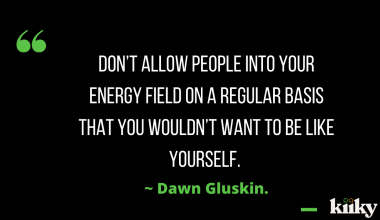In World Scholarship Forum, research articles make up 40% of the content on the website.
Research articles we mean here are contents that come in this structure “What’s,” “How to’s,” “A vs. B,” and “School or University Reviews.”
And these various types of content represent trust, authority, and influence on the website.
Hence, all traits of successful research content should seek to achieve this trifecta.
This structure aims to give you detailed information on how your content should be for any Research Article.
Let’s roll!
What is Research Content on this Platform?
As earlier stated, research articles on World Scholarship Forum are content types with the following format:
- “What’s,”
- “How to’s,”
- “A vs. B,”
- “School or University Reviews.”
The “What’s” type of article is questions that outline the definition of a career, field of study, etc.
You can now quickly identify them once you see a question-like article.
The “How to’s” are typical contents that state how to become any career you choose. It gives a step-by-step guide anyone can take to become whatever they choose.
Research content also includes articles like “A vs. B.” This seeks to know the similarities and differences between the two topics.
Finally, this platform also defines “School or University Reviews” as a research article that seeks detailed information about a particular school for a novice.
How to Structure your Research Content on this Platform
Introduction
When given this kind of article, start with a proper introduction about the topic. The introduction should always come in the following format:
- The first paragraph clearly states that you agree with the reader about why they are seeking a solution to their answer.
- The second and third paragraphs can state facts with data about why you support the claim or the history surrounding your focus keywords.
- The rest paragraph should then promise that the article will offer them the information they seek.
Queries
Once you’re done with the introduction, the next stage is to start with Queries associated with the topic, as illustrated in the Training.
Queries we mean here are those questions people ask about a particular career, event, school, and so on. The essence of having queries on any topic is to give an elaborated answer to those critical questions people are asking Google about.
In our structure, we expect these queries to be at least 5 in number.
Here’s how your respective research subtopics should look like for the different research content types (“What’s,” “How to’s,” “A vs. B,” and “School or University Reviews.).
How to Write Queries for “What’s” Article
For topics that are What’s, have queries that give complete information about the issue in descending order.
For example, consider this Topic; What Degree Do You Need to Become a Teacher in Canada? | 2023 Full Guide, start with queries of this kind:
- Is teaching a promising career in Canada? Why become a teacher in Canada?
- Is it easy to get a teaching job in Canada?
- How much do teachers earn in Canada?
- What is the job outlook for teachers in Canada?
- What qualifications do you need to be a teacher in Canada?
- How long does it take to become a teacher in Canada?
- How much does it cost to become a teacher in Canada?
- What are the licensure requirements for teachers in Canada?
- Which schools offer the best degree for a teaching career in Canada? List and explain each school’s teaching program, tuition cost, requirements, and acceptance rate(if any), and provide a link to each school’s teaching degree program.
We have good examples of such on the platform, such as:
- What is NCAA Accredited Certification? | Requirements, Cost
- What is Petroleum Engineering Technology| Job Description, Salary, Schools, Cost
How to Write Subtopics for “How to’s” and “What’s” Articles
For topics that are How to’s, for instance, “How to Become an Animal Psychologist In 2023 | Cost, Requirements, Schools,” you should have queries that give your reader a better understanding of your keyword before giving them the step-by-step guide in becoming that.
From the above topic stated, you can have queries of this kind;
- What are animal therapy and psychology?
- Why become an animal or pet psychologist?
- What do animal psychologists do?
- How long does it take to become an animal psychologist?
- How much does it cost to become an animal psychologist?
The above queries, when duly answered, give the reader a better view and reasons to take up the career.
These topics should also cover the schools that offer the Best Animal Psychology Programs, which you will list and explain.
In explaining each school, you should include their accreditation, tuition, acceptance rate (if any), student-to-faculty ratio, and the link to each school’s animal psychology programs.
Here are good examples of this type of content that can guide you through:
- How to become an Animal Psychologist In 2023 | Cost, Requirements, Schools
- How Can I become a Neuropsychologist? School, Cost, Programs, And Salary
- https://kiiky.com/how-to-become-a-marriage-counselor/
How to Write Subtopics for A vs. B Articles
For topics that involve comparisons, such as; Dissertation vs. Thesis | Similarities and Differences, your queries should look like this:
- What is a Dissertation?
- What is a Thesis?
- Similarities between a dissertation and a thesis. (Also include the needed skills)
- Differences between a dissertation and a thesis. (This can include structural differences, length, research content, oral presentation, and differences in context: location matters, the purpose behind written research, and degree type.)
- Give a rundown of how to effectively write a dissertation as well as how to write a thesis.
Here are good examples of this type of content that can guide you through:
- Part-Time Vs. Full-Time Mba: Admission Requirements, Schools, Cost, Duration
- Scholarship vs. Fellowship: Differences, Meaning, and Top Opportunities
- Professional Schools vs. Graduate Schools: Which Is Best For Me In 2023?
- BS vs. BA | Major Differences Between Bachelor of Science and Bachelor of Arts
How to Write Subtopics for “School or University Reviews” Articles
School and University Reviews are typically alike. This article should give a full review of a school or university, and no information should be left untouched about the school.
Let’s see an example of how a School or University Review query should look like.
Let’s consider this topic: Rensselaer Polytechnic Institute Review | 2023 Acceptance Rate, Programs, Tuition, Admission Requirements
It would be best to write a good introduction about Rensselaer Polytechnic Institute. Remember the above instruction on how to structure your first, second, and other paragraphs.
Your queries should look like this:
- Is Rensselaer Polytechnic Institute a Good College?
- Why Attend Rensselaer Polytechnic Institute?
- Is Rensselaer Polytechnic Institute an Ivy League?
- Rensselaer Polytechnic Institute Ranking
- What is Rensselaer Polytechnic Institute Acceptance Rate?
- Is it hard to get into Rensselaer Polytechnic Institute?
- Rensselaer Polytechnic Institute Admission Requirement.
- What is SAT score required for RPI?
- Programs offered at Rensselaer Polytechnic Institute.
- How Much is Rensselaer Polytechnic Institute Tuition?
- Student Life at Rensselaer Polytechnic Institute.
- Pepperdine University: Admission, Courses, Scholarships, Fees In 2023
- Rivier University: Admission, Programs, Tuition, Ranking, Scholarships
Frequently Asked Questions (FAQs)
Once you’re done with the queries, answer at least 5 FAQs (Frequently Asked Questions) related to the keywords for better optimization. The answers should be straight to the point; no need for lengthy explanations.
Note: The FAQs can also be the exact subtopics treated above, but in a shorter form and precise.
Conclusion
After the FAQs, you can then include a short Conclusion. This should be precise and summarizes all you’ve written.
References
References are as crucial in any article as the body because it includes the links (URLs) of the articles that formed the basis of your writings.
You didn’t write the content on your own.
Hence, include at least five references. You can highlight the basics in situations where they’re not up to or over 5.
Additionally, include the picture source link (URL)
Meta Description (SEO)
Don’t forget to write your meta description in the box provided. This is the best introduction you can give your article and should include your focus keyword.
Additional Information
- Include the focus keyword in your introduction, especially in the first paragraph.
- Float your keywords (focus keyword and additional keywords) at least 10 to 15 times in your content.
- Write more in active words (present tense) than in passive voice.
- Write correct sentences. Study more about mastering grammar and sentence construction.
- Do not use ambiguous words. Let the sentences be comprehensible.
- Do not use filler words to make up the word count. Instead, add another query.
- Each query/subheading shouldn’t exceed 300 words.
- Each paragraph shouldn’t exceed 150 words.
- Beware of consecutive sentences. No three sentences must start with the same word.



